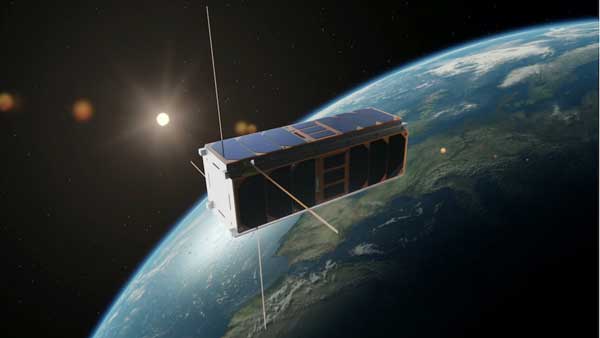
Its operational life should have been a few hours to experiment with new technologies. Instead, the ASI nanosatellite continued to function for over two weeks, traveling at orbital altitudes dense with deadly radiation.
ROME (ASI PR) — Its operational life in orbit after launch was supposed to be only a few hours, but for about fifteen days its signal, loaded with scientific data, was loud and clear. This is the mission of Astrobio Cubesat (ABCS) a nanosatellite created by the Italian Space Agency (ASI) the National Institute of Astrophysics (INAF) and the School of Aerospace Engineering (SIA) of the Sapienza University of Rome, responsible for the development, integration and platform operations, assisted by the University of Bologna (UniBO) for the preparation of the experiment.
Astrobio CubeSat was the first of the secondary passengers released after the ASI satellite “ LARES2 ” at about 6000 km altitude from the new European launcher VEGA-C , which took off on 13 July from the European space base of Kourou in French Guiana.
As evoked by its name, the mission of Astrobio, whose main body measures 30 cm x 10 cm x 10 cm, had the primary objective of carrying out an organic molecule detection experiment using an ultra-compact laboratory (Lab on Chip) under conditions representative of a space mission. Its operational phase can therefore be considered completed but it was much higher than expected. In addition to microgravity conditions, the experiment was carried out in an orbital environment, including a hostile zone such as the internal Van Allen belts, characterized by a flow of charged and highly energetic particles, therefore with doses of radiation considerably higher than that naturally present both on Earth and very similar to various deep space environments.
“This project represents the continuation and validation in orbit of what was developed and tested in the laboratory as part of the PLEIADES project , a collaboration between ASI, SIA and UniBO carried out between 2016 and 2019 – explains Simone Pirrotta , Project Manager of the Astrobio mission and also of PLEIADES. – With this further step of verification of robustness and versatility, the device is a candidate to become a tool available to future robotic and human explorers, to whom it is useful or of interest to detect the presence of organic molecules in the surrounding environment “.

